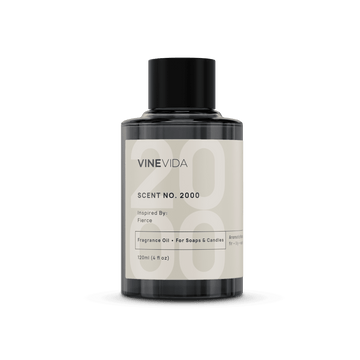The beautiful Palo Santo wood, sacred to the Curanderos, has long been used for energy healing and creating sacred space by these shamans and healers of South America. When it is burnt, the fragrant wood disperses notes of pine, mint and lemon. A strange and unusual blend of mystical actions that ground the body yet invigorate the mind.
Today, we’ll hear the mystical tale of Palo Santo essential oil.
What Does Palo Santo Essential Oil Smell Like?
For anyone who has never smelt Palo Santo essential oil, it is a surprising treasure. Many people describe it as being a little like baked apple with caramelized sugar, but I can also smell a delicious and mysterious licorice-ness in it.
The name Palo Santo means "Holy Stick" in Spanish and it comes from a very illustrious family. It is believed that the ritual usage of the wood may date back to the Incas as the medicine man waved the stick into the etheric body of “the patient” to clear any negative thought patterns or emotional disturbances.
Where Does Palo Santo Essential Oil Come From?
Hailing from the Burseraceae genus, it is a cousin to frankincense and myrrh. To my mind it is almost like a sister that sits as an intermediary between them; the flighty, floaty lightness of frankincense paired with the grounding balsamic thickness of myrrh. They come from different continents, of course, the sacred resins coming from Africa and Palo Santo from South America. It is found in seasonally dry tropical forests from the south of Peru, across to Mexico and on the Galápagos. My mind ponders on botanical evolution amongst continental drifts. I wonder where their parent plant may have hailed from all those millions of years ago or indeed what it was.
For these are important plants. Ones that connect the human animal with its god, that take the brain into sacred spaces and clear the realms for safe communications with him. Palo Santo is traditionally used to purify the air, to dispel evil spirits, and to cleanse a person or place of negative energy.
Palo Santo, Bursera graveolens, is a medium-sized tree that can grow to a height of almost 60 feet. Its trunk is straight with small buttresses sticking out of it. Female trees bear long showy pinkish-red ribbons of flowers that will go on to bear fruit. It is a very difficult tree to grow. Trees do not produce seeds until they are six years old, but saplings rarely happen since the seeds are so delightful to pigeons!
Is Palo Santo Endangered?
The future of the Palo Santo tree is in jeopardy. In this instance, unlike Frankincense which is being over-tapped for its resins, it is not the tree as such that is suffering difficulties. Rather, it is its habitat. Despite thankfully being overlooked for population and construction, it is so dry, it is prone to voracious forest fires and invasive grasses.
Palo Santo essential oil is created by distilling the heartwood of the tree. These heartwood areas have entirely different chemistries to the rest of the tree. Often happening because of an infection or trauma, such as having been hit by lightning, the tree creates a ring of biological chemicals to protect the rest of the tree from the changes that must take place while it is healing. Palo Santo is not alone in this kind of action, it is also the case with Agarwood, that creates the beautiful Muslim Oudh. Consequently, distilling essential oils from live woods is not at all the same.
In the case of Palo Santo, this heartwood happens as a mature tree dies naturally. The heartwood develops as it decays on the forest floor. As such, then, it’s important to protect the trees. Indeed in 2006, the government of Peru declared it to be in critical danger, but then in 2014 removed its endangered status. However, in Guatemala, harvesting live trees is illegal, and licenses are required even to collect fallen, dead wood. Tumbled branches and trees age on the forest floor and are then dried. It is during this “curing period” that the unique, rich aroma takes form.
What Is Palo Santo Essential Oil Good For?
When the wood is burned as incense, it acts as a mosquito repellent, similar to citronella. Palo Santo essential oil will do the same, due to its high content of limonene.
In traditional South American medicine, it is used to soothe cold and flu symptoms.
The limonene content in both the wood and in Palo Santo essential oil gives it an uplifting quality that can be used to help emotional pain and Perhaps even depression.
Clearly it aids relaxation and meditation and relaxation.
Traditionally, it is said to boost creativity and to bring good fortune. Always being a bit of a stick in the mud around these kinds of things, I prefer to use Palo Santo specifically as a Holy Wood and to reserve it merely for ritual use rather than its therapeutic indications.
However, these could be seen as similar to tea tree and Eucalyptus, cleaning the air of germs, and when used topically easing coughs and colds. Traditionally, the native peoples of the area drink tea made from the wood to alleviate stomach ache. When Palo Santo essential oil is used on the abdomen, those minty notes start to work harder and can be very helpful for digestion.
Palo Santo is a great bringer of peace to those who are suffering emotionally and physically or who are dying.
Conclusion
What a beautiful oil. Enjoy the peace and uplifting nature of Palo Santo essential oil for meditation, for relief from negative thoughts, for coughs, colds and digestion.















